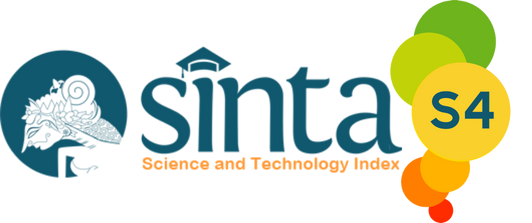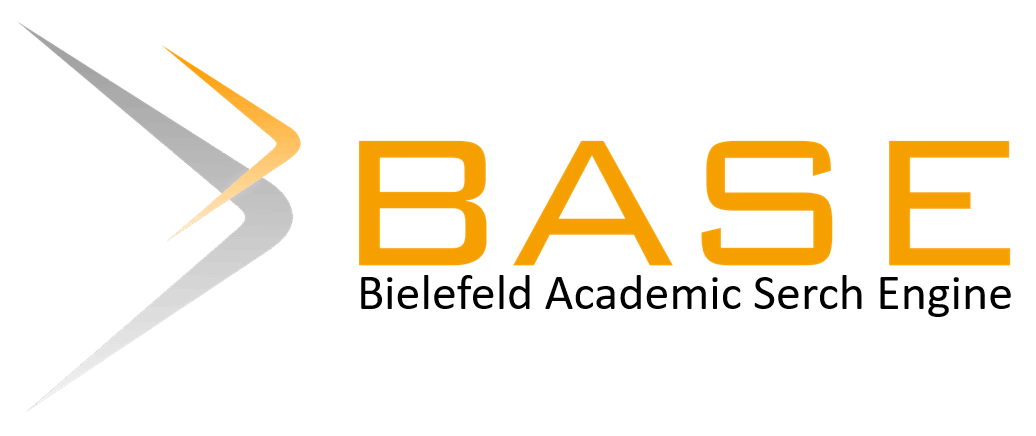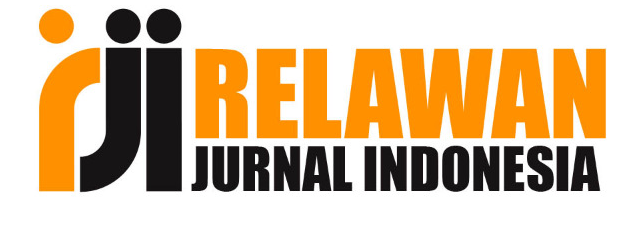Author Guidelines
General Requirements Manuscript Writing
Guidelines for the author of the manuscript can be described as follows.
- Manuscripts written in Indonesian or English with single-spaced line density, Times New Roman 12 font, A4 paper size, two column format, and last costum setting margin (top 2.54 cm; left 2.8 cm; bottom 2.54 cm; right 2 , 54 cm).
- The length of a scientific manuscript should be between 6000 - 9000 words or approximately 10-15 pages, including any graphics, graphics or tables (if any) that accompany it.
- The terms in a foreign language or regional language in the text are written in italic.
- The literature review is not included as part of the article structure. Thus, citation of important literature can be integrated in the introduction chapter or in the discussion. The citation of the literature in the discussion as necessary only and which is preferred is the discussion of the results of the analysis of the data found alone.
- Manuscript sent via submit on www.ejournal.iainkerinci.ac.id after going through the registration process (register), and login on the website above. For those who do not submit via https://ejournal.iainkerinci.ac.id/index.php/al-dzahab/, can not be processed by JJ OJS system.
- Incoming script will be selected by the system and will be forwarded to the reviewer (partner bebestari) in accordance with the field of articles.
- The manuscript reviewed by the reviewer (the bebestari partner) will be returned to the author if a reviewer needs improvement. After the authors make improvements in accordance with the input and assessment reviewers, re-sent by the author.
- The revised texts by the authors will be reviewed by our partners, if the partner recommends to be published, the manuscript will be published online. If the partner bebestari states still needed repair, then the script will be sent back to the author to be revised again.
Structure of Scientific Articles
In general, the structure of scientific articles of field research results and scientific articles conceptual research is relatively the same. The structure of scientific articles of research on 10 main sections are: (1) title; (2) ownership line; (3) abstract; (4) keywords; (5) introduction; (6) methods; (7) results and discussion; (8) conclusions; (9) thanks and (10) bibliography. The structure of scientific article conceptual research is divided into 9 main sections namely: (1) title; (2) ownership line; (3) abstract; (4) keywords; (5) introduction; (6) discussion; (7) conclusion; (8) thanks and (9) bibliography. Each section is given an explanation as follows.
A) Title
- Titles should be concise and informative, with no more than 20 words, including the liaison. For a title to be short and succinct in 20 words, avoid connecting words and mentioning objects, places or research materials in great detail.
- The title contains the key words of the topic under study.
- Times New Roman, 14, Bold, Capital type with single line spacing.
- Title in Indonesian or English, in accordance with the language used in the manuscript.
- Avoid using abbreviations, formulas and referrals.
B) Ownership lines (authorship lines)
- The institutional affiliation of the author follows the place where the work is concerned.
- Authors' names should be people who actually participate in planning, execution, analysis of results, discussion, and report writing.
- The academic / functional or bachelor's degree does not need to be listed.
- The name of the institution is listed in full to the country name, written under the author's name along with the postal address, email and facsimile (if any) for correspondence purposes.
- If the author is more than one person and comes from a different institute, then all addresses are listed by marking a superscript letter starting from a at the back of the author's name in sequence.
- The name of the correspondence author is given an asterisk (*).
- The author's name Times New Roman, 12, Bold, should not be abbreviated
C) Abstract
- Abstract is written in summary and factual, covering key issues, main findings, novelty, research recommendations in the future, research methods, results and conclusions.
- Abstracts are written in one paragraph; Written in two languages (Indonesian and English); Abstract lengths ranging from no more than 200 words written in a single paragraph.
- Avoid referrals and unusual abbreviations.
D) Keywords
- Keywords consist of 3 to 5 words and or word groups.
- Written in alphabetical order.
- Between keywords separated by semicolons (;).
- Avoid many connecting words (and, with, that and others).
E) Introduction
- Avoid the sub-sub in the introduction.
- Introduction should contain the background of problems, problems and research objectives.
- The percentage of the introductory page length is between 20-30% of the total length of a manuscript.
- References are indicated by writing the author's family name / last name and year of issue, regardless of page number. The foundation of theory is presented in complete, concise, and completely relevant sentences for the purpose of writing scientific articles.
F) Research Methods
- Briefly summarize the materials and methods used in the study, including the subjects / materials studied, the tools used, the design or experiment used, the sampling technique, the variables to be measured, the data retrieval technique, the analysis and the statistical model used.
- Avoid writing excessive statistical formulas.
- If you use a well-known method, please state the name of the method only. If necessary, specify the reference source used as a reference.
- For qualitative research, research methods can adjust.
G) Results and Discussion
- The format of the results of the study and discussion is not separated, given the number of pages available to the author is limited.
- Results can be presented with the support of tables, graphs or images as needed, to clarify the presentation of the results verbally.
- Tables and charts or captions are arranged in the form of a phrase (not a sentence) in a nutshell.
- Description of the image / graph is placed under the image / graph, while the title of the table is placed on it. The title begins with a capital letter.
- Do not repeat writing numbers that have been listed in the table in the text of the discussion. If it will suppress the results obtained should serve in other forms, such as percentage or difference. To show the number in question, just refer to the table that contains the number.
- In general, do not want the international journal statistical language (such as: Significantly different, treatment, etc.) written in the discussion. Avoid copy and paste tables of statistical analysis results directly from statistical data processing software.
- Material discussion mainly concerned whether the results are consistent with the hypothesis or not, and put forward the argument.
- Referral citation in the discussion should not be too long (if necessary avoid).
- Citation results of research or opinions of others should be abstracted and written in the sentence itself (not using the exact same sentence).
- Similar research sets can be referred to in groups.
H) Conclusion
- The conclusions should be the answers to the research questions, and are expressed not in statistical sentences.
- Written along a paragraph in essay form, not in numerical form.
I) Acknowledgments
- Acknowledgments are generally placed after the conclusion.
- Contains gratitude to the funding agencies, and or individuals who have assisted in the execution of research and the writing of manuscripts.
J) References
General provision of bibliography:
- The referral system and bibliography must use the Mendeley program ( www.mendeley.com ), End Note ( www.endnote.com ), which uses the APA (Association Psychology of America)
- For research articles, references are referenced from about 10-15 articles of scientific journals.
- Updates of referenced scientific journals should be considered, at least as a result of relevant publications in the last 10 years.
- The bibliography is arranged alphabetically in alphabetical order of the author's name.
- Author name: the name displayed is the author's last name (surname) followed by the initial (and middle) name abbreviation if any). If the author is more than one person, then the way of writing is the same.
- The writing of a reference title begins with a capital letter only at the beginning of a sentence.
- Each writing of the name, year, title of the article and so on ends with a period (.) Before the next word follows. Special writing volume (number) of the journal is given a colon (:) without spacing. Examples of writing can be seen in the explanation of each type of literature worth mentioning.
- The manuscript should refer or quote one or several articles of the BENEFITE Journal.
- References used at least 80% primary sources and 5 (five) years of publication.
Terms of referral writing by reference type:
If the source is an article in a scientific journal, it is written in the following order: author's name. year. Article title. The name of the journal. Volume (number): page (Journal name is skewed).
Example:
Cohen, EB (2009). Opening and Closing Rituals in Aikido and Karate and the Dismantling of Violence. Journal of Ritual Studies. 23 (1): 29-44.
If the library source is Textbook, it is written in the following order: author name. Year, book title. Volume (if any) .edition (if any). Publisher city: publisher name (title of book in italics).
Example:
Arikunto, S. (2002). Research procedure of a practical approach. Jakarta: Rineka Cipta
If the literature source is a translation book written following the sequence: the name of the original author. Years of translation. Title of translation book. Volume (if any). Edition (if any). translation. Publisher city: publisher name (Book title is italicized).
Examples:
Steel, RGD & Torrie, JH 1991. Principles and procedures of statistics. A biometric approach. B. Sumantri Translation. Jakarta: PT Gramedia Pustaka Utama
If the source of the article in the collection of articles written in the following sequence: the name of the author of the article. Article title. In: editor name if there is Ed (if single) or Eds (if more than one) in parentheses. year. book title. Volume (if any). Edition (if any). Publisher city: publisher name (Book title is italicized).
Example:
Ancok, D. Validity and reliability of research instrument. In: Singarimbun M and Efendi (Eds). 1999. survey research method.Jakarta: LP3ES
Linz, J & Stephan, A. Some thoughts on decentralization, devolution and the many varieties of federal arrangements. In: Jhosua K (Ed). 2001. Crafting Indonesian Democracy. Bandung: Mizan Publisher
If the source of the article in the proceedings written in the following sequence: the name of the author. year. Title of the seminar. Title proceedings. The venue of the seminar. Time of operation (Article title is italicized).
Example:
Alimi, MY 2011. When Religion fails to Nature Character Proceeding International Conference Ethics in Development. Semarang. 17-19 July 2011
If a library of unpublished scientific papers (eg theses, theses, dissertations and research reports), are written in the following order: author's name. year. Title of research report. Name of research project. City publisher: institution publisher / institution (thesis writing / thesis / dissertation / research report in italics).
Example:
Habibah, N. 2012. Manaqib as Solidarity Ritual in Grobogan. Essay. Semarang: Faculty of Social Sciences Semarang State University
If the source is an article in a general newspaper / magazine, it is written
in the following order: author's name. year. Article title. Name of newspaper / magazine. City, publication date and page (Article title is italicized).
Example:
Syamsuddin, A. (2008). Invention of law or behavior of chaos? Compass. Jakarta. January 4th. Pg.16 Kukuh, A. 2008. Free education obsession in Semarang. Suara Merdeka. Semarang March 5th. P. L
If the source library is an online journal article, it is written in sequence: author's name, year. Article title. The name of the journal. Volume (number): page (The name of the journal is italicized).
Example:
Ernanda, SE (2005). Challenges to the modern concept of human rights. J. Social-Politics. 6 (11): 1-12
If the library source is an online article (internet) without a published place and publisher, it is written in the following order: author's name. year. Article title. Downloaded at website date address (Article title is italicized).
Example:
Levy, M. (2000). Enviromental scarcity and violent conflict: a debate. Downloaded at http://wwics.si.edu/organiza/affil/WWICS/PROGRAMS/DIS/ECS/report2/debate.htm July 4 2












